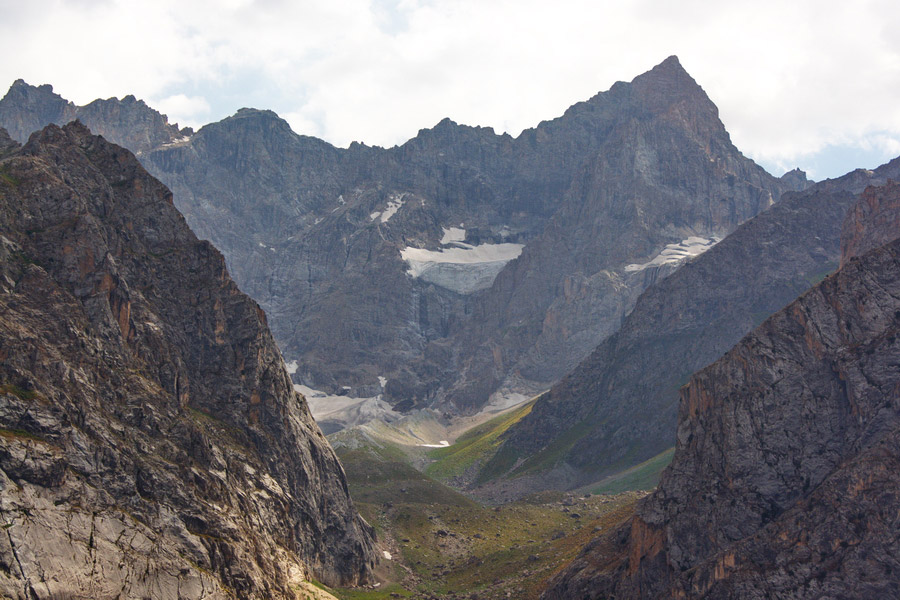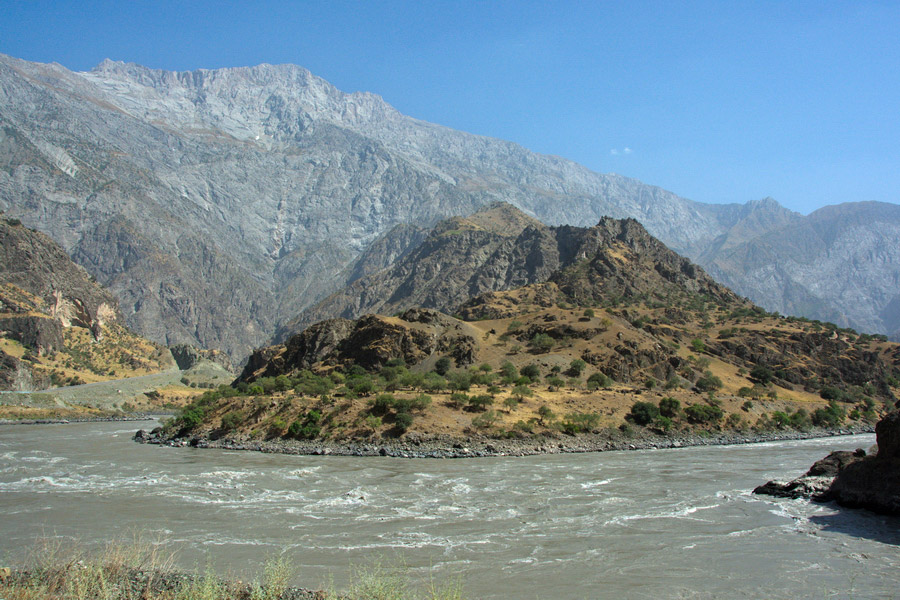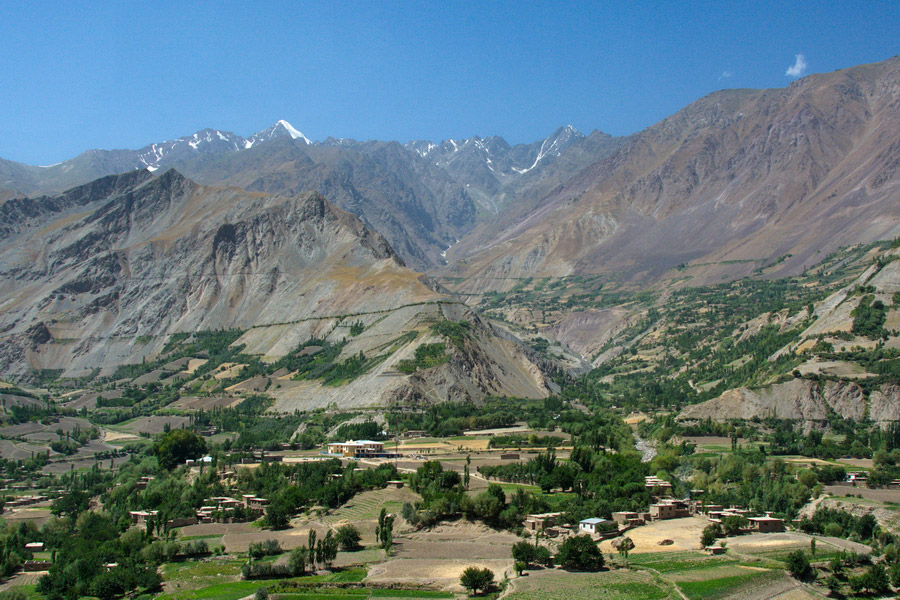
Practically the entire territory of Tajikistan, 93% of it to be exact, is located in the mountains. Moreover, half of the land lies at a height of over 3000 meters above sea level. There are the Turkestan, Zeravshan, Gissar and Alay Ranges in Tajikistan, and the entire eastern part of the country is covered by the Pamir Range. The highest point of Tajikistan is Ismoil Somoni Peak, which is 7495 meters high (25,590 feet). 24 more peaks over 6000 meters (19,685 feet) are also located in the country.
Tajikistan’s mountains are quite diverse. They vary according to geological classification, relief, glaciation and other characteristics. The most picturesque mountains are in the west of the country – there are ridged peaks, wide gorges, juniper woods, alpine meadows in the Fann Mountains. The Pamirs are also very beautiful and varied, but they differ because of their severe climate, higher ridges and desert plateaus.

Where there are high mountains, there are glaciers, lakes and rivers. 6% of the territory of the country is covered with glaciers, of which Fedchenko is the most popular. Tajikistan has more than 2000 lakes, most of which are in the mountains, such as Iskanderkul, Bulunkul, Karakul, Yashilkul, Sarez, and Seven Lakes. Many wild rivers start in the mountains, flowing from glaciers.
The Fann Mountains

The Fann Mountains are a small mountain system located in the west of Tajikistan, on the border with Uzbekistan. The Fann Mountains include part of the Gissar and Zeravshan Ridges, with eleven peaks over 5000 meters (16,404 feet) high. The highest peak is Chimtarga, at 5489 meters (18,008 feet). Further…
The Pamir Mountains
The Pamir Mountains are a mountain range taking up almost the entire eastern half of Tajikistan. There are many peaks over 6000 meters, and the highest point is Ismoil Somoni Peak (7495 meters, 24,590 feet) above sea level. The Pamirs are severe mountains, with a great number of lakes and glaciers. Further…

